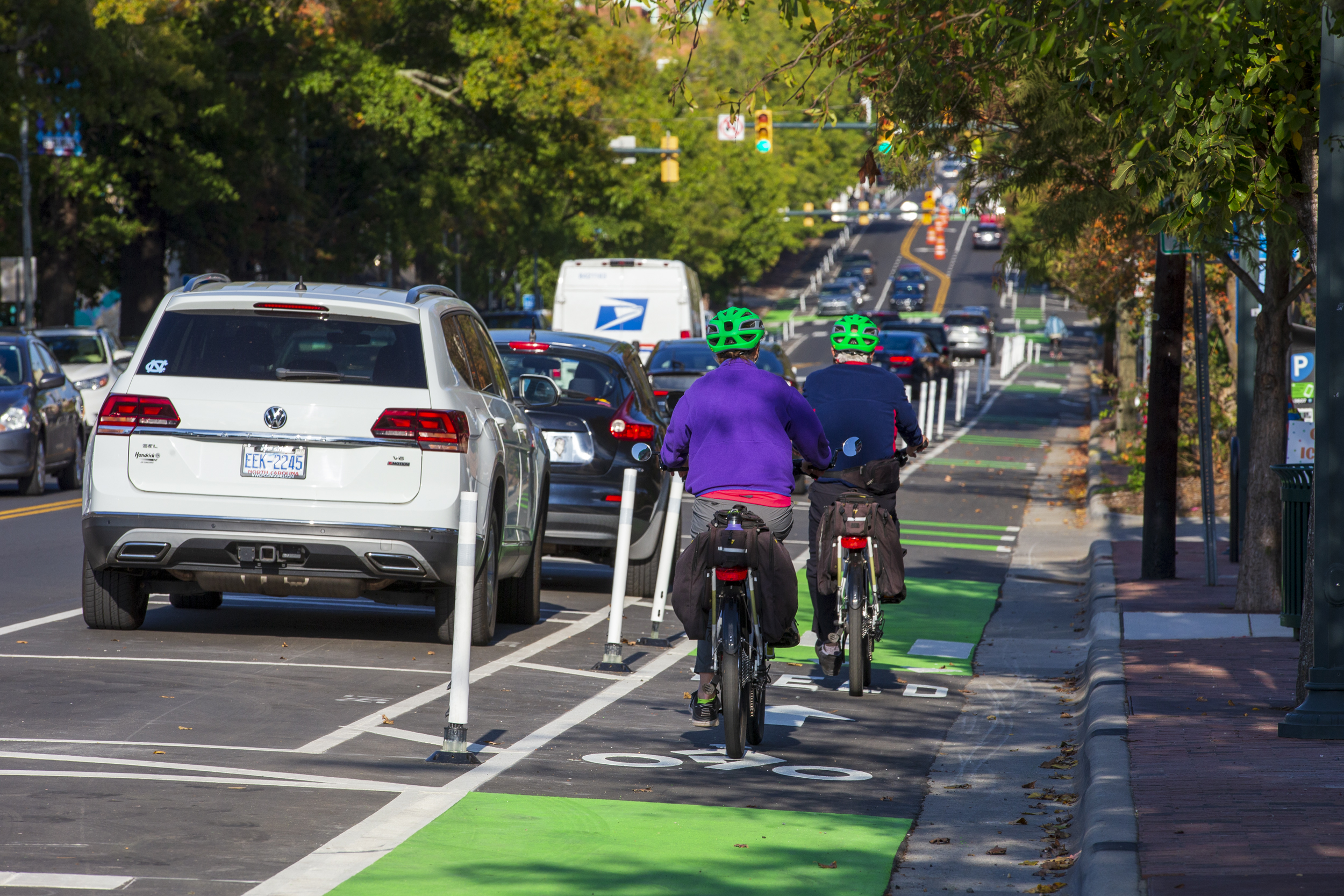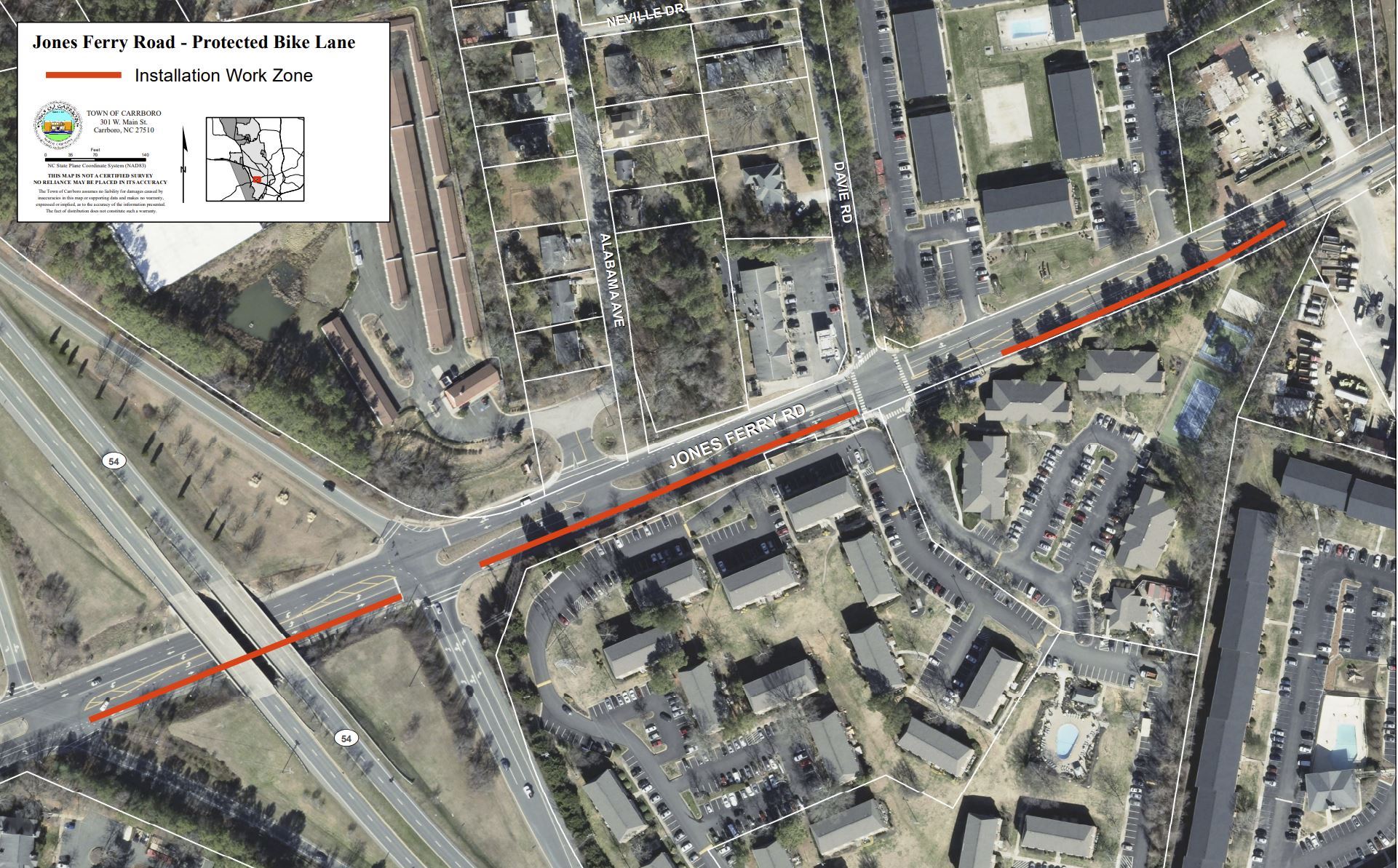Will return with part two of my piece on journalism tomorrow—here’s part one, if you missed it—but since it’s on my mind, I wanted to get this out of the way today.
Today’s news included a troubling story about a pedestrian who died after being hit by a car on Bethel Hickory Grove Church Road west of Carrboro. Just a couple days ago, a man in Mebane was killed after being hit by a train.
It’s been a year full of incidents like this, it seems. We’re not far removed from another pair of similar accidents that took place in September—one on 15/501 near Estes Drive that killed 31-year-old Lisa Baldwin and another, further south on 15/501, that killed two bicyclists, Ivin Scurlock and Alexandra Simou. Go back further in the year and you’ll find other incidents too.
Now I want to be clear: each of these was an isolated case, not necessarily a part of any larger trend.
Still, they’ve got me thinking again about something I’ve believed for a while now:
For all the talk about how much we care, neither Chapel Hill nor Carrboro is a particularly bike-friendly or pedestrian-friendly town.
I’m not saying this because there’s been a string of recent accidents. The accidents are just what got me thinking. I’m saying this because there are major thoroughfares with no sidewalks or bike lanes, because the bike lanes we do have are a millimeter wide and our sidewalks often end in seemingly random spots, because it’s impossible for me to look at a biker in town without feeling a twinge of sympathy terror on their behalf. I can’t be the only one who feels that twinge.
I use Estes Drive fairly regularly to get from Chapel Hill to Carrboro. Quite a few bikers use it too. There is a bike lane along part of the road, but it’s narrow—and it’s right next to the car lanes, separated only by a strip of paint that’s maybe two or three inches wide. Cars weighing a ton or more zoom past the bikers at 35, 40, 45 miles an hour, not even a foot away. This is what passes for ‘bike-friendly.’ I don’t bike in Chapel Hill-Carrboro, so I don’t know firsthand, but I’ve walked along the sides of busy roads often enough to know there’s always a little bit of nervous uncertainty every time a car goes by. I have to assume bikers in our town feel that same nervousness, all the time—or else they’ve grown so accustomed to the feeling that it doesn’t even register anymore.
I worry about the cars too. The other day I was on Greensboro Street, heading north from Merritt Mill toward downtown Carrboro, and as we were driving up the hill, in front of us was a biker, plodding along at three miles an hour in the middle of the car lane. Three miles an hour because he was pedaling up a steep hill; in the middle of the car lane because there is no bike lane on that part of Greensboro. Nothing about this was his fault. Behind the biker, there was a line of five, six cars—we’ve all been in that line, right?—and to get around him the cars were steering into the opposite lane. Well, it’s only a two-lane road. That opposite lane was oncoming traffic. Everybody was careful and everything was fine—but still, it’s partly just sheer luck we didn’t see a head-on collision on Greensboro Street that day.
And that’s only the most recent example I can think of. How often do you see people veering into oncoming lanes of traffic to avoid a biker or a pedestrian who’s in the car lane because they have nowhere else to go? How often have you done it yourself?
Drivers and bikers are always getting in each other’s way. Drivers are more likely to be the pushy jerks, I think—when in doubt, always blame the guy with the bigger muscle—but the truth is, this is not really anybody’s fault. This is just what happens when you force two very different modes of transportation to coexist on the same strip of asphalt. Bikers are forced to make do in a car’s world; inevitably they get pushed to the side; and it isn’t good for anybody. We want to be “bike-friendly,” we need to give bikers their own asphalt. (Same as we do for planes and trains.)
Otherwise you end up like Calvin’s dad.
We do a better job, I think, with pedestrians. I don’t bike in Chapel Hill, partly because the thought terrifies me and partly because I’m an out-of-shape weakling. (Me bike, in a town with the word “hill” in its name? Please.) But I do walk. I live near the Fordham/Franklin split, very close to the Booker Creek Trail, a 10-minute walk from Eastgate, 20 minutes from the library, and if I’m feeling really frisky, a 45-minute walk downtown. (Also 45 minutes from WCHL.) I’ve done all these walks. It’s nice. Same deal in Carrboro, where I could walk from my old apartment near Carrboro Plaza to the Carr Mill Mall (sorry, “Historic Carr Mill”) in about 25 minutes.
All these walks are possible because Franklin Street and Main Street are both sidewalked. If you have an hour or so to kill, you can walk all the way from Carrboro Plaza to Trader Joe’s, a little more than five miles down Main and Franklin, sidewalks the whole way. Pedestrians get their asphalt.
Once you’re off those two main drags, though, it’s much more of a crapshoot whether you’ll get a sidewalk or not. Estes Drive? Not so much. Weaver Dairy? Not so much either. From where I live now, it’s a straight shot up the Weaver Dairy hill to get to WCHL—but lacking a sidewalk, that’s not the road I use when I walk. I take the back streets, cutting through roads like Kingston, Honeysuckle and Brookview. (There’s a hill on Brookview that’s a beast.) Even then, more than half my walk is on the street itself. There’s a nice sidewalk on Kingston, but that’s it. I’m walking on curvy roads, up and down hills; when a car comes the other way, it’s a surprise to both of us. I’ve gotten pretty good at figuring out where I have to jog across the street to make myself more visible to any cars that might be coming. It’s something of a maze. (And forget ever doing this at night. Now that we’re on standard time, I won’t be doing that walk again until April.) The same goes for when I’m driving on those roads: I’ve lost count of the number of times I’ve rounded a bend or crested a hill to suddenly spot a pedestrian in front of me, out in the street where a pedestrian shouldn’t be—and wouldn’t be, if they’d had a sidewalk to work with.
Why are there so few sidewalks in Chapel Hill? I grew up in Lansing, Michigan—not a wealthy town, and not one that ever blew its own horn about being “pedestrian-friendly”—but as far as I can recall there were sidewalks everywhere. Not just on the main drags—on the side streets as well, in every neighborhood. There was hardly a street in town that didn’t have them.
Maybe I was spoiled. Maybe I’m misremembering.
But it really seems like this should be an attainable goal.
Because we do try to be bike- and pedestrian-friendly. We really do. We have awesome trails all over town, Franklin and Main and Weaver Streets are great places to walk, and we’re constantly actively encouraging folks to ditch their vehicles whenever possible. (Promoting infill and density help make towns more walkable too.) Chapel Hill’s put in some nice pedestrian islands along MLK and Weaver Dairy, Carrboro staff have worked long and hard on their bicycle master plan, and we make a point to talk about adding more bike lanes whenever and wherever we can. Sometimes we even do it.
It’s for that reason, after all, that Chapel Hill and Carrboro receive so many honors and awards and accolades for being bike- and pedestrian-friendly. In fact the League of American Bicyclists has recognized Carrboro as one of the 40 bike-friendliest towns in the entire country, and number one in North Carolina. Chapel Hill’s not far behind.*
Those accolades are great.
But I really think they say a heckuva lot more about all those other communities out there than they do about Chapel Hill and Carrboro.
We still have a long, long way to go.
* – The League has given Carrboro its “silver” award for bicycle friendliness; Chapel Hill has won a “bronze” award. (The League recognizes Lansing too, as it happens–also with a “bronze” award, same as Chapel Hill.)







